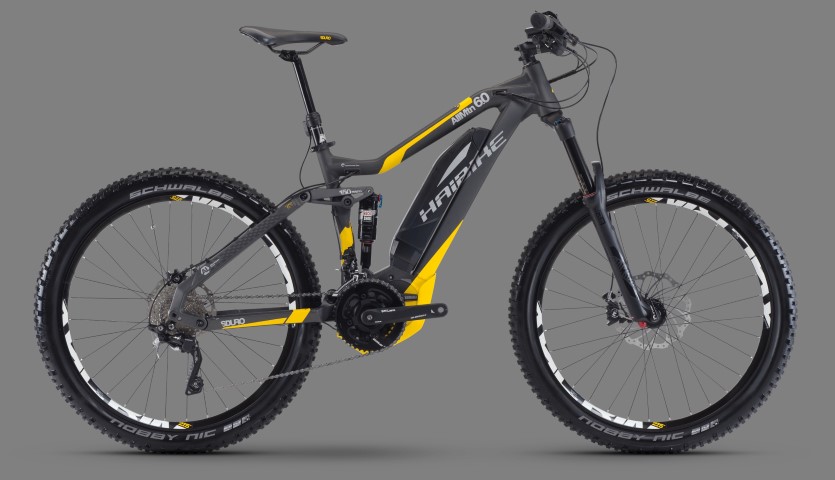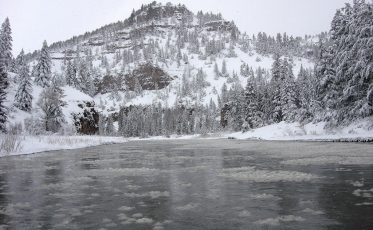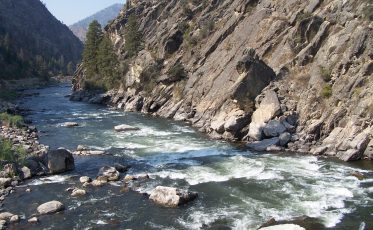The eMTB Controversy: eBikes Should Be Allowed On Mountain Bike Trails
This is the first part in a series of articles delving into the controversy surrounding eMTBs and their use on mountain bike trails. Read Part 2.
Electric mountain bikes (eMTBs) are relatively new on the scene and mountain bikers are freaking out. “They shouldn’t be allowed on our trails.” “They are going to ruin the sport.” It reminds me of when the first mountain bikes started popping up on trails and hikers were panicking with visions of crazed bikers running them over. Well, their fears never materialized and mountain bikes have become popular tools for exploring the outdoors responsibly.
I have been mountain biking since the late 1980s, when all I could afford was an entry-level Bridgestone MB-5 on my strapped college budget. Over the years, I’ve explored up and down the mountains of Washington and Oregon in search of the best singletrack. The bikes changed but our passion ebbed not. When I co-founded Trails.com in the late 1990s, mountain biking was still one of my top outdoor pursuits. Our employees were outdoors nuts as well and biking was simply a part of life.
Mountain bikes have come a long way since the 80s. Rock Shox showed up and eventually everyone had a hardtail bike. Then came dual-suspension bikes for all sorts of riding styles. My choice was a cross-country bike so I could climb fast and descend fast without the need for big air. Brakes have gone from simple calipers, to grippy Shimano V-Brakes, to bomber hydraulic disk brakes. While all this was going on street-focused eBikes were evolving too. It should be no shock that the technologies would merge to create eMTBs. A lot of people who were part of the mountain biking revolution in the 80s are getting older and eBikes allow them to continue the sport they love later in life. Whether it’s riders dealing with health issues or injuries, or simply just getting older, the emergence of eMTBs makes total sense.
Why I NEED an eBike
As my boys were growing up in the 2000s, we would bike together in local parks and I always dreamed of taking them on my favorite big rides when they reached their teenage years. But in 2012 I started getting sick and I didn’t know why. Two years later, after countless doctors visits, tests, and head scratching, I received some bad news from my doctor: somewhere in my adventures, I had contracted Lyme Disease. My life has never been the same.
After a couple years of strong antibiotics, a strict diet, and lots of rest, I was getting better so I thought I would try biking again. My son Andrew took me for a modest city ride and my Lyme symptoms spiked for three solid weeks – malaise, headaches, and weakness returned. I realized that I would probably never ride bikes again. After talking with my doctor and doing some research, I found that easy to moderate exercise can be beneficial, but strenuous activity can be detrimental. With mountain biking it is difficult to avoid exertion except with lift-assist or shuttles to trails with uninterrupted descents. Typical mountain bike rides with even slight hills like my city ride would probably send me into a tailspin again.
Just recently my son came to me with this idea of getting an eBike so we could ride together again. He shared some YouTube videos of guys riding these new bikes on technical terrain I dreamed of doing again. I was intrigued enough to test ride an eBike at a bike shop near my home. The salesperson took me out for a long hilly spin on a dual-suspension demo bike and I was impressed. The motor is adjustable from barely noticeable to seriously helping on the uphills. It doesn’t propel a rider like a motorcycle does, instead it just gives a boost to the rider’s normal pedaling of the bike. This assist mode can be turned off too.
What eMTBs are like
If you haven’t ridden or even seen a modern eMTB, here is what I have discovered. They are sturdy rigs that come standard with quality mountain bike components including beefy forks and rear suspension systems, strong disk brakes, and a reliable drivetrain. They are heavy but not that far out of the old downhill bike weight class. The distinguishing “e” features are the electric motor at the bottom bracket (some have hub motors), the battery pack, and the handlebar-mounted computer that controls the system. They have adjustable assist modes: off, low (barely helps), medium, and the battery-draining high mode. When everything is put together, they are something to behold.
 Sample all-mountain eMTB
Sample all-mountain eMTB
eBikes and mountain bike trails
While I was waiting patiently for my 2017 model eBike to be manufactured and delivered, I came across an article in the local paper about a woman with a degenerative muscle disease who wants to take her eBike on forest service trails that are designated for mountain bikes. “What the hell?” I said, completely floored (what I actually said isn’t fit for publication). When I ordered this bike, the thought hadn’t even crossed my mind that it would be illegal to ride on mountain bike trails with my new, albeit electric, mountain bike.
After doing some research, I found that the article was correct: the US Forest Service and Bureau of Land Management both prohibit eBikes on their trails that allow mountain bikes. In the eyes of these national agencies, eBikes are “motor vehicles” and lumped in with motorcycles, ATVs, and even off-road vehicles like Jeeps. I have been riding knobby-tired motorcycles since I was in third grade and can clearly state that pedal-assist eMTBs and “dirt bikes” are completely different animals.
US Forest Service eBikes Briefing Paper
BLM eBike Information Bulletin
On state property the laws vary by state, but because eMTBs are so new, many don’t have official policies and the agencies are just starting to field inquiries about regulations. Of the states with policies in place, about half are regulating eBikes as bicycles and half are regulating eBikes like mopeds.
To make matters more complicated, I discovered that electric bicycles have three different classifications according to their manufacturers:
- Type 1: pedal assist with a maximum assisted speed of 20 mph
- Type 2: throttle assist with a maximum assisted speed of 20 mph
- Type 3: pedal assist with max assisted speed of 28 mph (“speed pedelecs”)
My bike and the ones I am discussing in this article are Type 1. I have to agree with the government agencies that bikes that aren’t at least partially human-powered should be not be lumped in with mountain bikes. The faster Type 3 eBikes are okay for street use, but are too fast for trails. But, this little-known taxonomy might cause confusion with regulatory bodies or broad public opinion that sees all eBikes as the same.
What the mountain bike community says
When I started looking beyond the legal regulations, I discovered something that further disturbed me: the mountain biking community is predominantly anti-eBike and quite vocal about it. Maybe it’s a minority that is louder online, but either way, I was shocked to see that mountain bikers and mountain bike organizations, such as International Mountain Bicycling Association (IMBA), are against sharing the trails with eBikes. While some of the online community spoke up in favor of eBikes, they were outnumbered by hardliners.
Related: Read why mountain bikers reject eBikes
What I would like to see
Government agencies like the USDA National Forests and the Bureau of Land Management should distinguish between electric pedal-assist eBikes (Type 1) and self-propelled eBikes (Type 2). The former are still human-powered whereas the latter are fully motorized like a motorcycle. Some states like California are already recognizing the different classifications of eBikes and allowing some on trails while prohibiting others. This clear distinction should help us avoid expanding our mountain bike trails to motorcycles, or worse yet, have trails that are currently open to mountain bikes relegated to “hiking only.”
Mountain bikers and their associations (which I used to be a proud member of), should reconsider their anti-eMTB stance, realize there is a need and demand for Type 1 eMTBs, and focus their efforts on keeping trails open for all mountain bikes. Mountain bikers deserve the right to ride more of our public trails than we are currently allowed. I won’t open a can of worms with my strong opinions on where I believe mountain bikes should be allowed, but suffice it to say that we don’t have near enough access as we should.
I would love to hear your thoughts
I know that this topic is new and still contentious, but the community needs to be talking about it because it isn’t going away. The weather up here in Seattle is rainy and cold (no surprise there), so I haven’t ridden my new eBike except around the block to make sure it worked. I can’t wait to hit the trails (legally or illegally). Expect a follow up comparing the eMTB to my other mountain bikes both in how it performs and the feeling I get from riding it. I never thought I would be riding an eMTB, so trust me, I won’t hold back.



